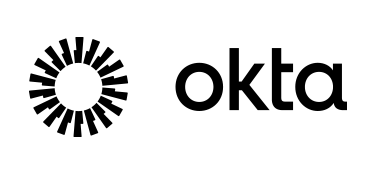
Okta
Octa
I linked Okta and Slack and realized single sign-on (SSO) and provisioning.
Introduction
The chat tool “Slack”, which allows easy communication both inside and outside the company, is a very convenient tool in the modern society in the corona crisis, and many people are using it.
This time, we linked Slack and Okta to realize single sign-on (SSO) and provisioning. We have summarized the necessity of SSO and provisioning and the flow of actual operations, so we hope that you can refer to this blog for "What can Okta do?" and "What are SSO and provisioning?" .
Provisioning from Okta to Slack
What is provisioning
Provisioning is the function that Okta and SaaS cooperate with API and automatically manage the life cycle of accounts.
Need for provisioning
With the spread of cloud services, it has become necessary to create, change, or abolish accounts and set permissions according to the user status (joining, moving, or retiring) for each service. By using Okta's provisioning function, you can centrally manage the ID status of your company's SaaS simply by managing Okta's user information and attributes.

Provisioning from Okta to Slack (user creation)
By enabling Create Users in the provisioning settings on Okta, users added in Okta will be automatically created in the linked Slack tenant.
Enable Create Users

Users added in Okta are created in Slack
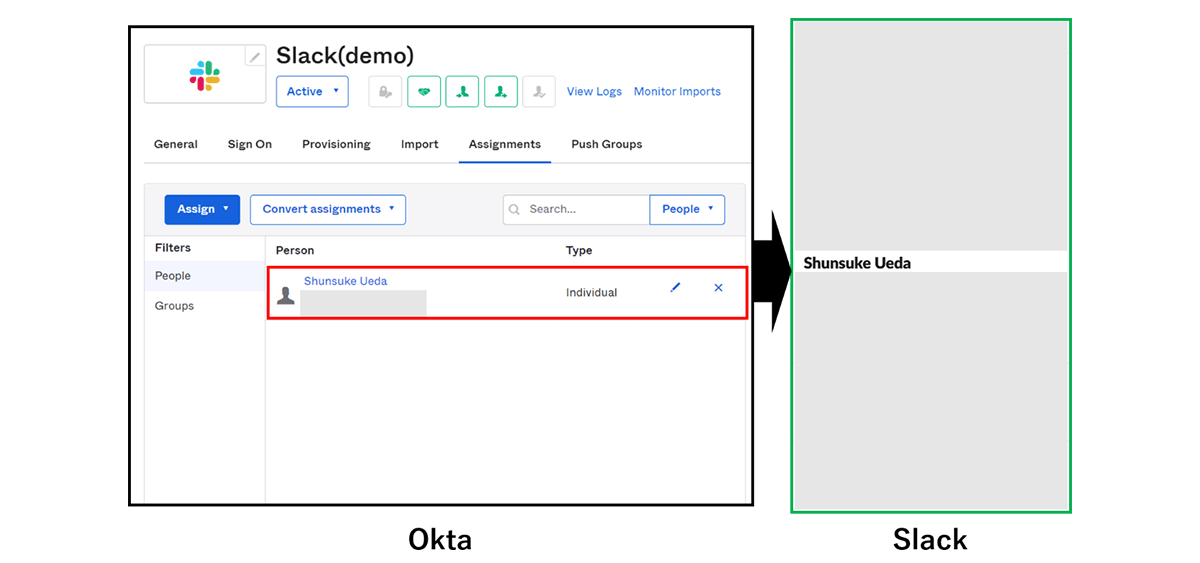
Provisioning from Okta to Slack (user profile update)
User attribute values in Okta and Slack can be linked using Okta's mapping function. For example in the image below,
- first name
- last name
- middle name
- employee numbers
- organization
- divisions
- department
You can see that is linked, but it is possible to link various other attributes.
By activating Update User Attributes, when attribute values are updated on the Okta side, the attribute values linked by this mapping function will be automatically reflected on the SaaS (Slack) side.
(This time, Okta → SaaS is taken as an example, but it is also possible to set up reverse synchronization.)
Mapping example ①
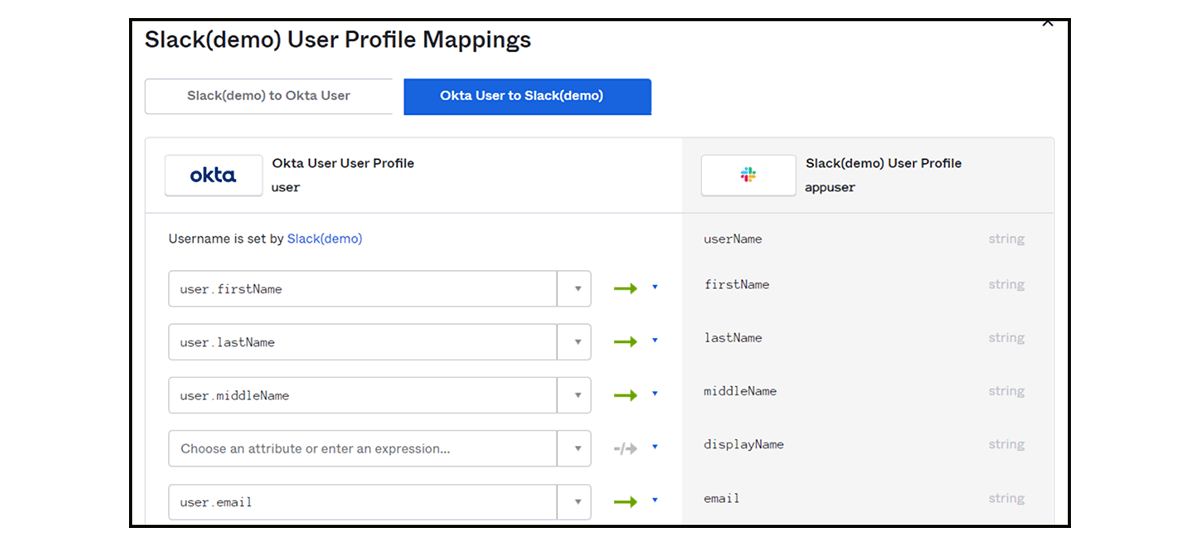
Mapping example ②

Enabling Update User Attributes
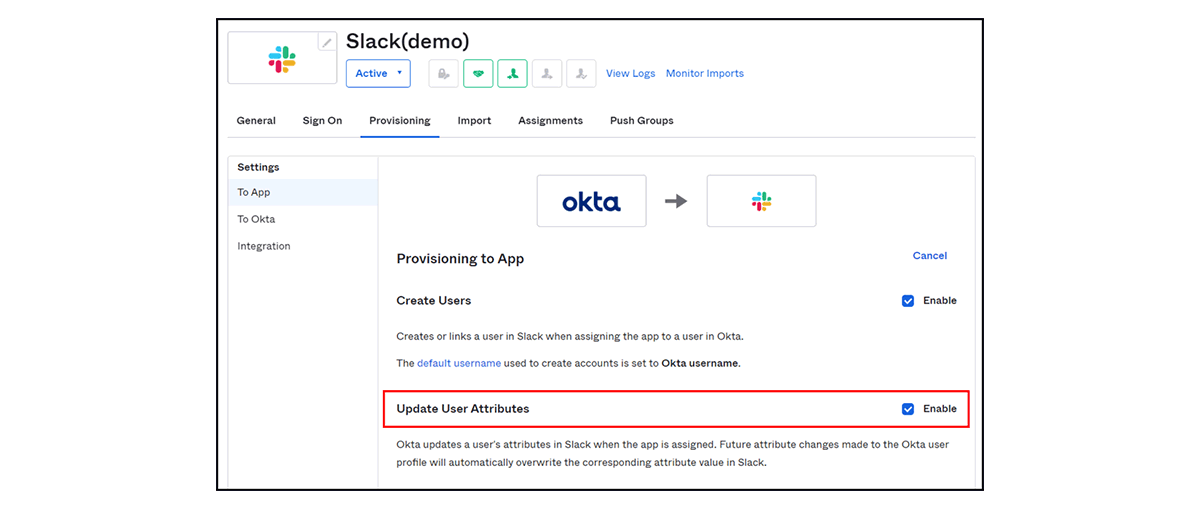
Okta to Slack provisioning use case
As a provisioning use case, we will introduce a case where the attribute values of "division" and "department" are automatically updated to the SaaS (Slack) side when an employee is transferred.
This time, I will focus on the red frame part (provisioning from Okta to Slack) in the image below.
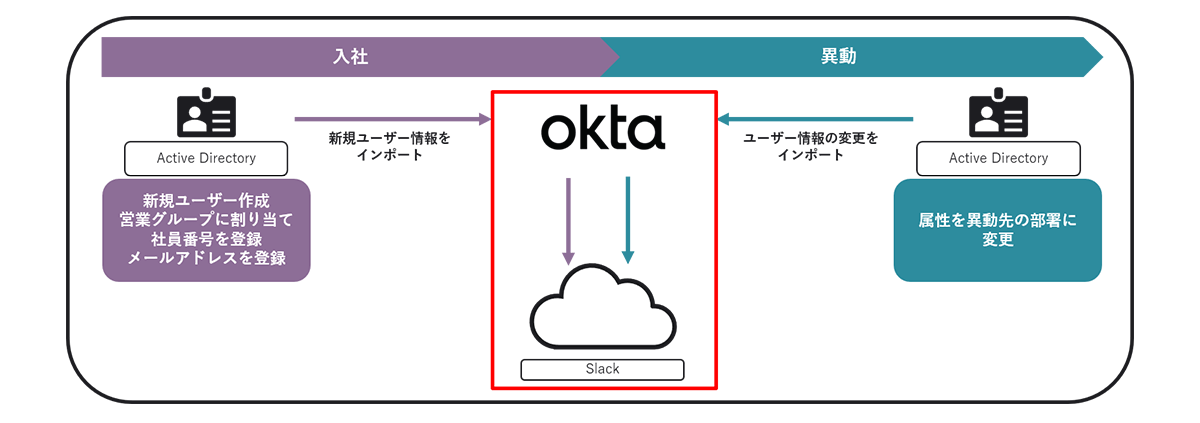
Attribute values of "division" and "department" of the transferred employee are changed on Okta (as user information is updated on the Active Directory side).
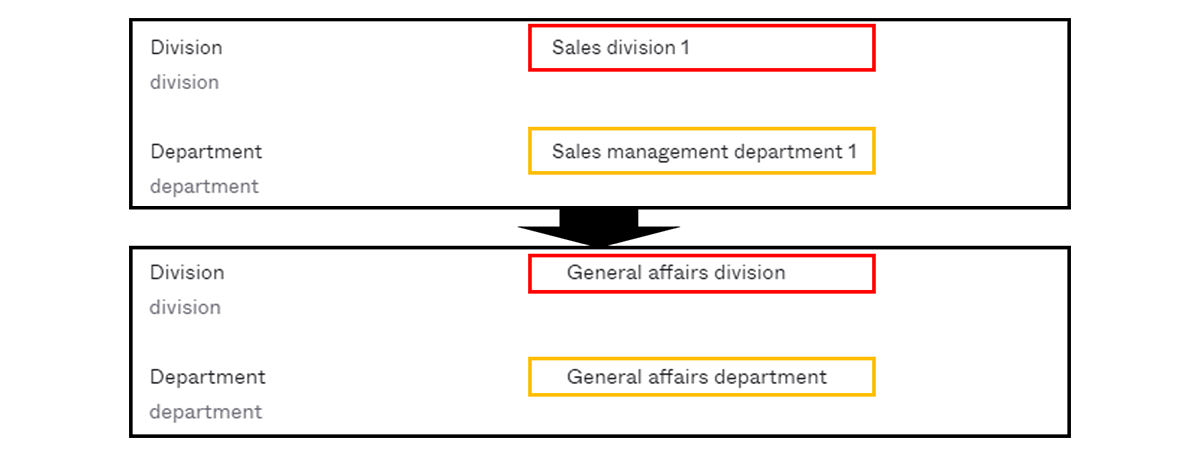
Attribute values changed on the Okta side (and Active Directory side) are also reflected on the SaaS (Slack) side.

Single sign-on (SSO) from Okta to Slack
What is single sign-on (SSO)?
It is a mechanism that allows you to sign on to multiple resources (services and applications) with only one authentication by an IdP such as Okta.
Need for SSO
If SSO is not implemented, it is necessary to manage multiple account information for one user, so different authentication is required for each service or application. By introducing SSO, IDs can be managed only by Okta (IdP), so it is possible to log in to each resource simply by signing in to Okta (IdP).
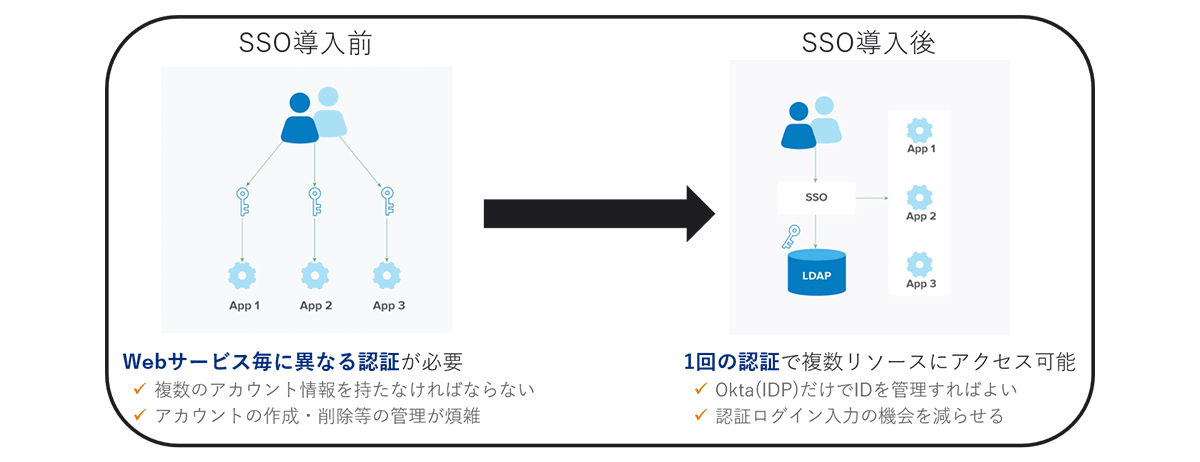
SSO from Okta to Slack
The above explains the flow of SSO to Slack with a user provisioned from Okta to Slack.
When selecting an app from Okta Dashboard and SSO to Slack (IdP-initiated)
1. Sign in to Okta
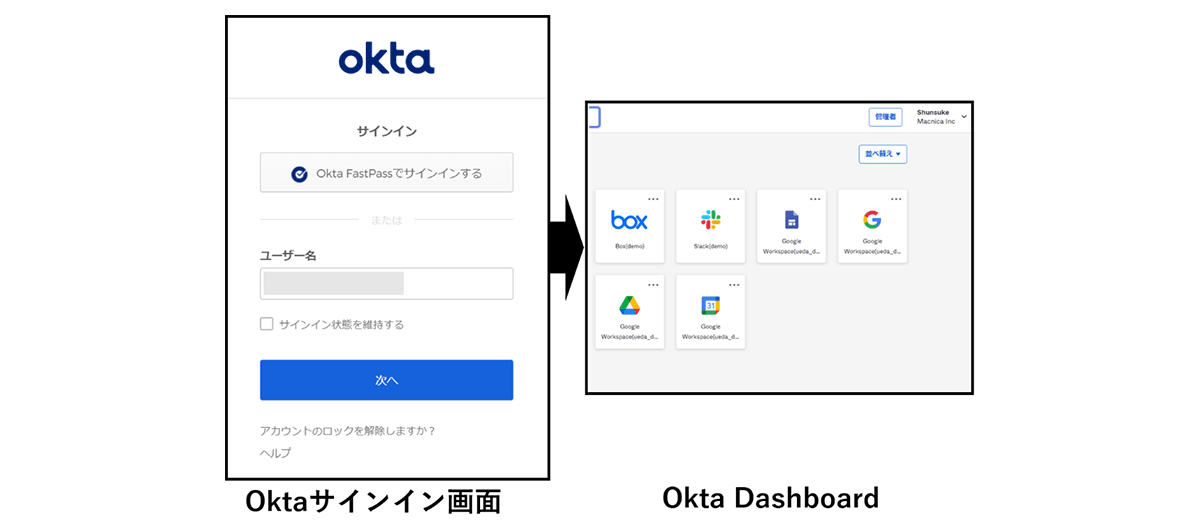
2. Click Slack app on Okta Dashboard and SSO to Slack
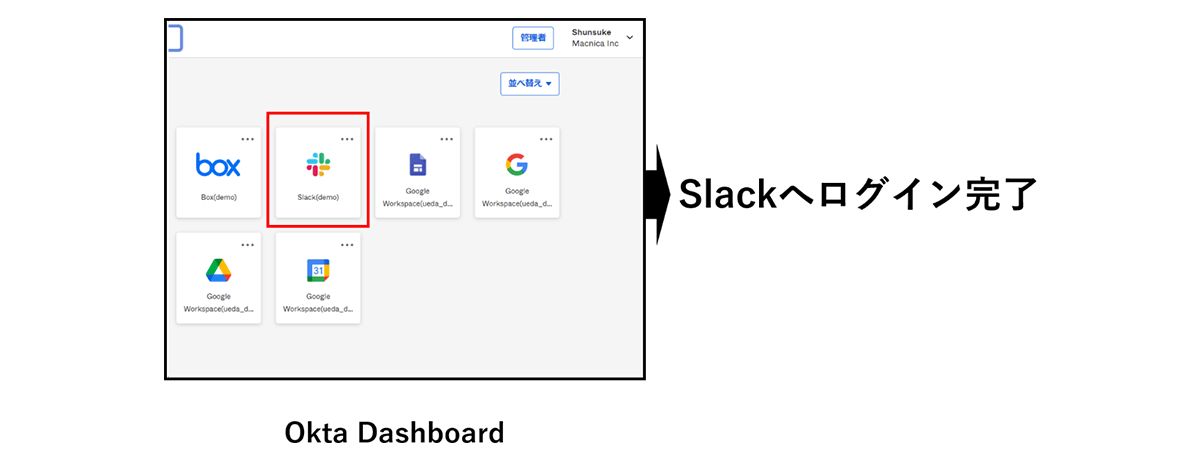
We introduced SSO to Slack this time, but you can SSO to all the applications displayed on the Okta Dashboard by simply clicking the application icon like this.
If you are already signed in to Okta and want to SSO from the Slack login screen (SP-initiated)
All you have to do is open the Slack login screen and click “Sign in with Okta”.

Summary
In this blog, I used the chat tool “Slack”, which is used by many people, as an example, and introduced SSO with Okta, the necessity of provisioning, and the flow of actual operations.
By implementing Okta, you can manage identities more safely and easily. Of course, there is much more that can be achieved with Okta.
This time, we introduced basic functions such as SSO and provisioning, but next time, we will introduce functions that will make you wonder, "I can do this!" I would like to introduce you, so please take a look.
If you are interested or have any other inquiries about Okta, please contact us.
Inquiry/Document request
In charge of Macnica Okta Co., Ltd.
- TEL:045-476-2010
- E-mail:okta@macnica.co.jp
Weekdays: 9:00-17:00

